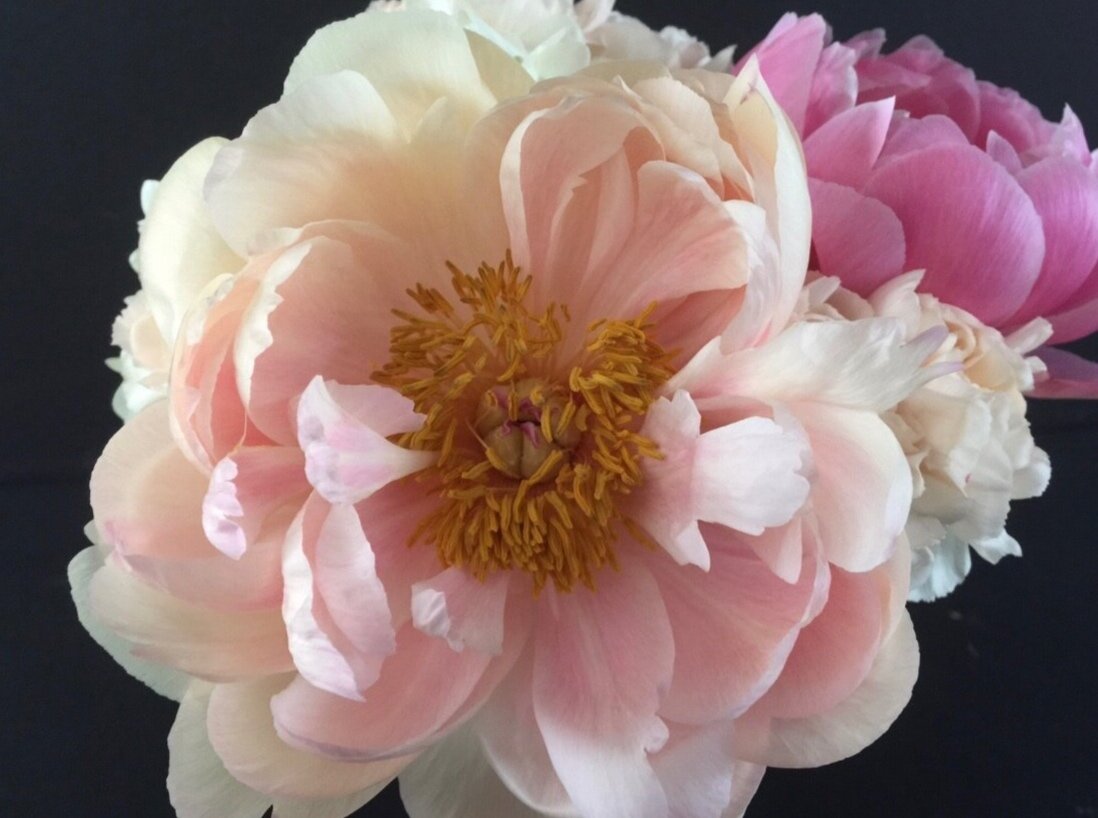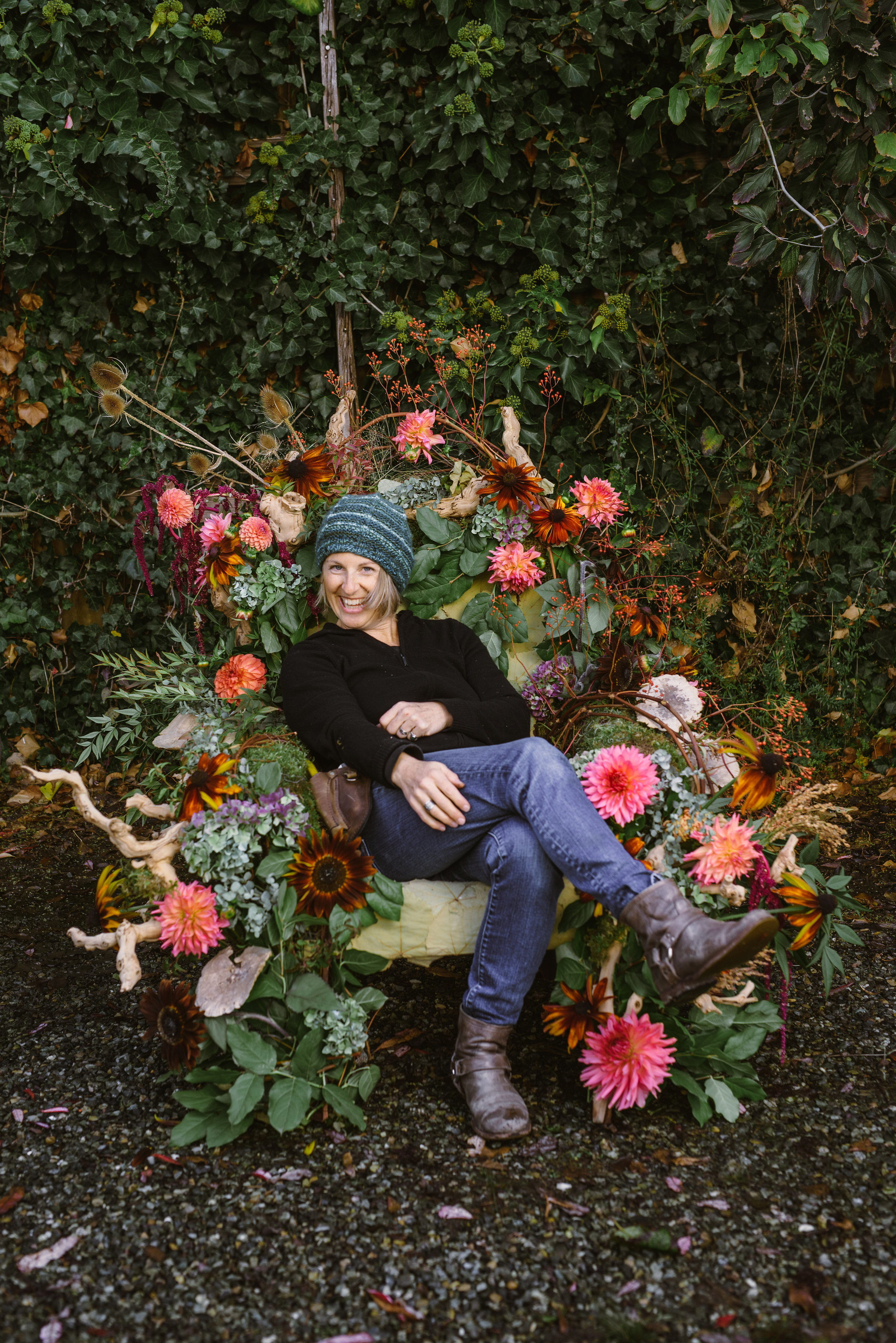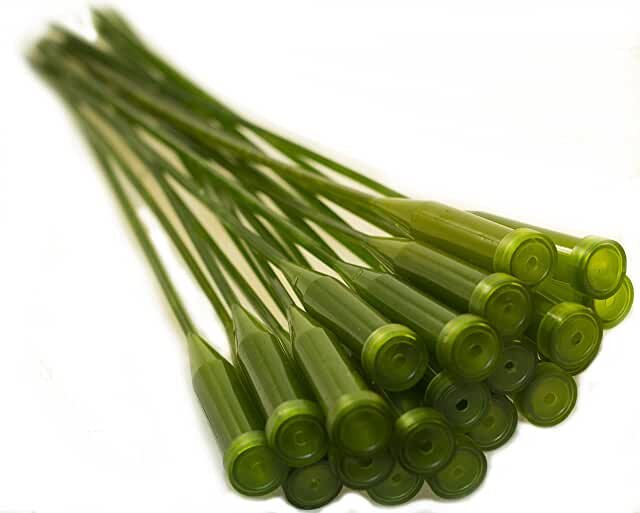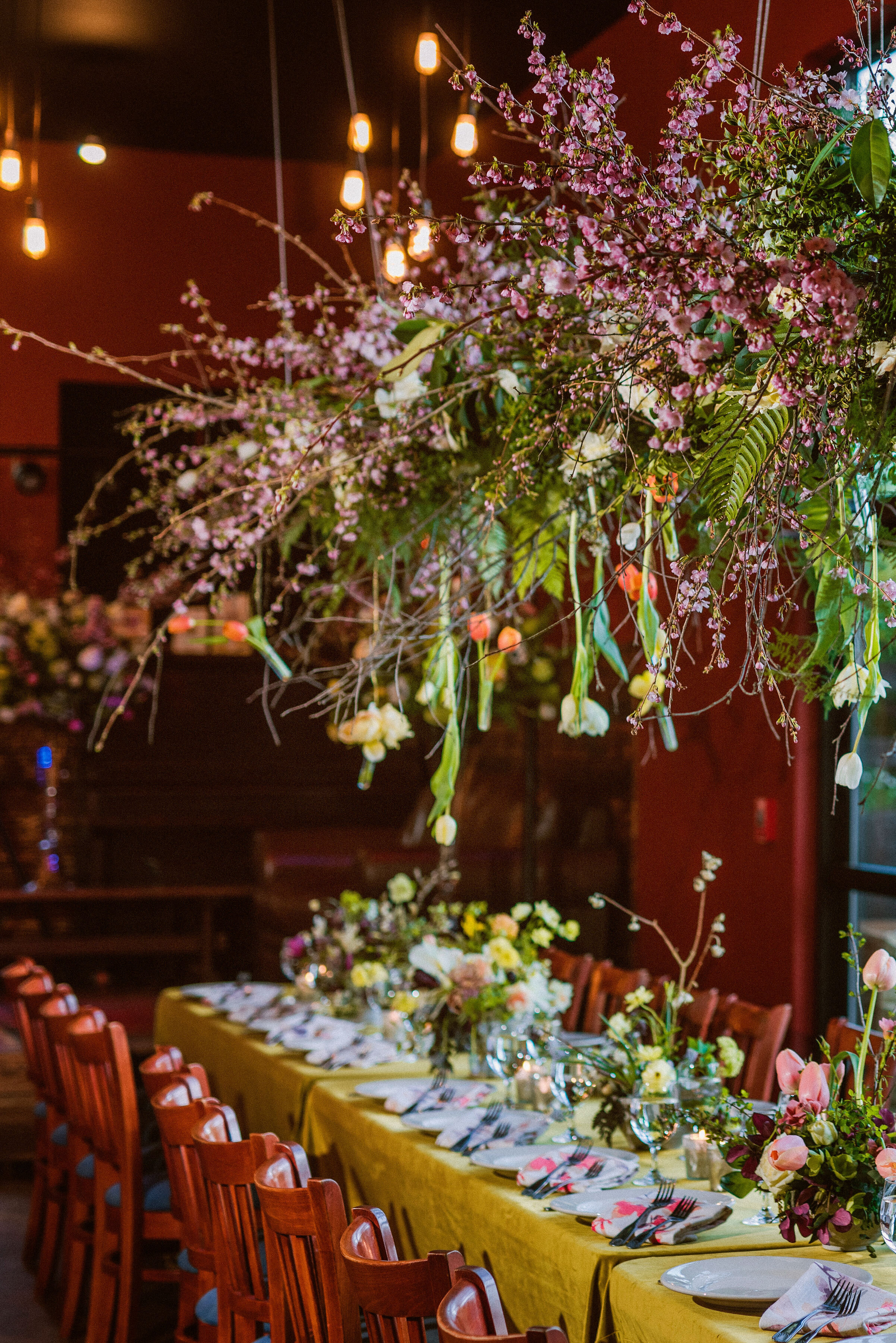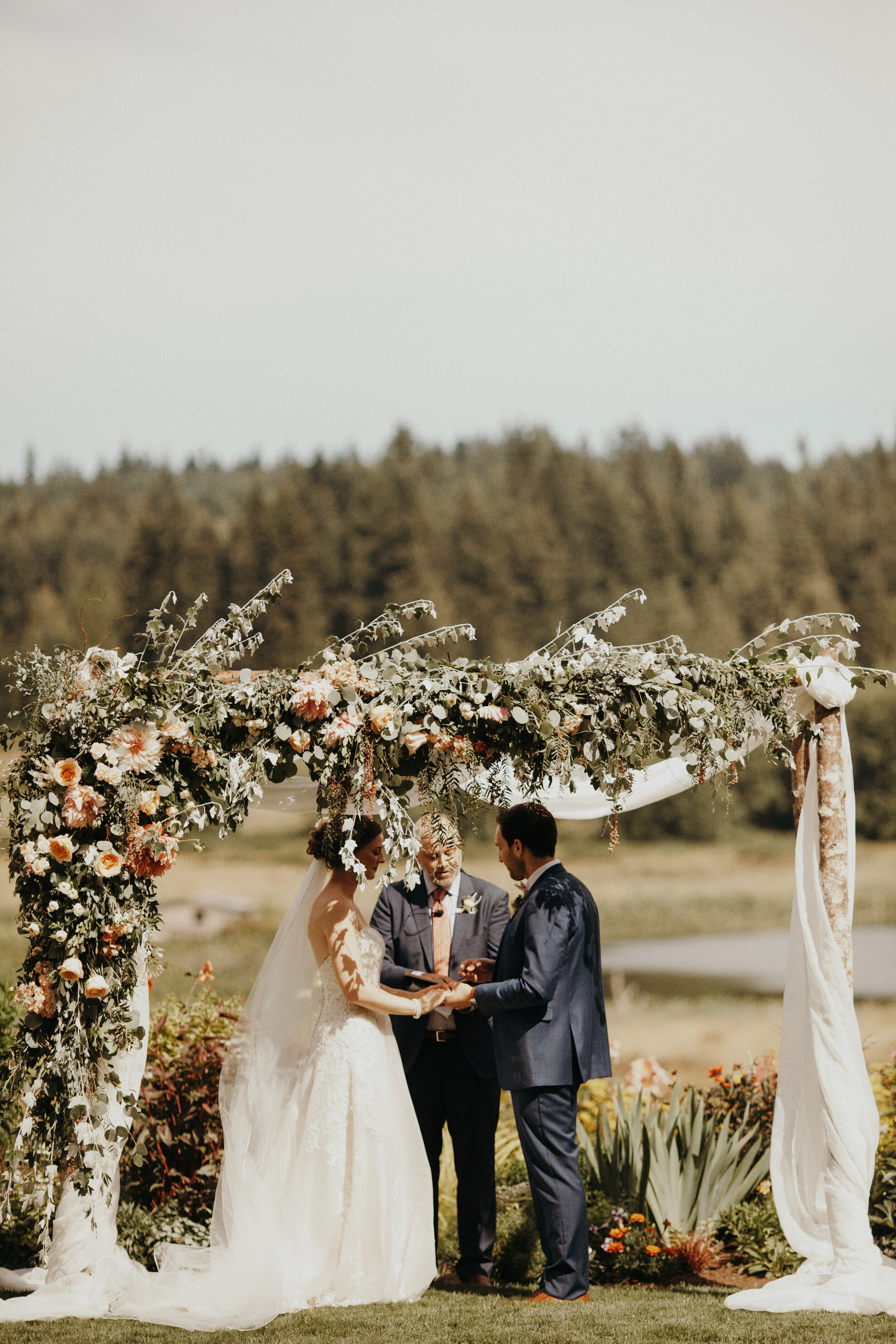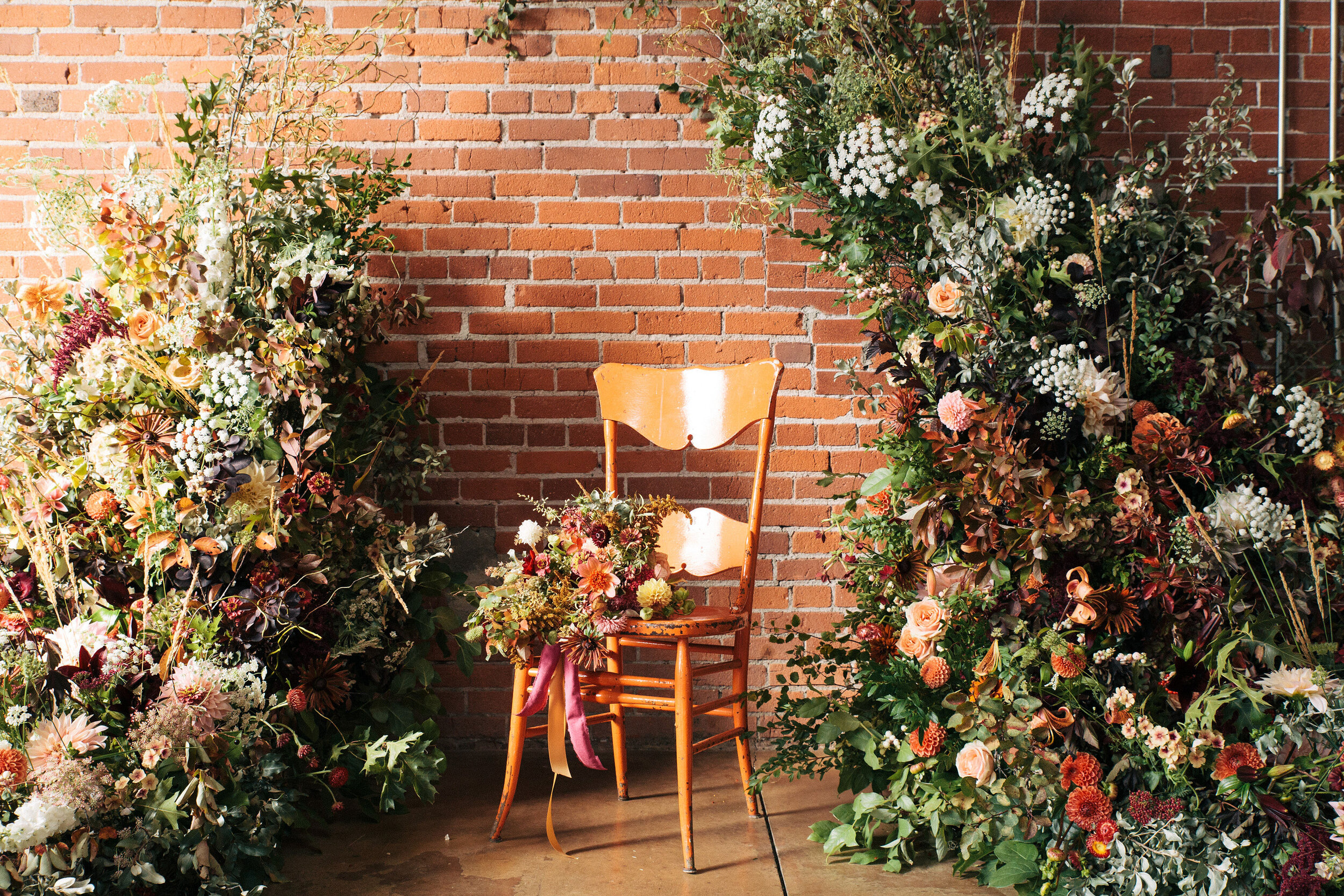By Tobey Nelson
image by Suzanne Rothmeyer Photography
I love building large scale floral installations. I also love to spread my passion for Sustainable Floristry! The floral industry is a dirty business. We can all take part in cleaning it up by paying attention to the mechanics we use.
As we learn more about the impact of plastics on human health and the environment, many florists are choosing to work without floral foam. I avoid floral foam in my own practice for a variety of reasons (see “The Problems with Floral Foam” ) but mainly because it is a single use plastic (= garbage in a landfill), and because it is a microplastic. Microplastics are causing harm – in both oceans, and likely to humans as well.
Many florists I have met are scared to move away from foam. They feel that their creativity will be limited. I don't feel that way at all! I have learned and developed many other techniques over the course of my floral career. I’m happy for this opportunity to share some of those ideas!
Floral Installations are made from 3 basic elements:
Structure, Water Sources, Botanicals.
Structures
Structures can be as straightforward as an arbor form or a metal ring, as homegrown as a bundle of twigs or a tangled wad of chicken wire, or as elaborate as a custom fabrication like a metal frame with water reservoirs welded or wired on.
Here’s a quick list of my go-to foam-free installation structure essentials:
Florist netting/Chicken wire/Oasis mesh – I strongly prefer the plastic coated as it lasts longest
Branches, sticks and stakes
Moss, Excelsior
Holly x Syndicate pillows
Stabilizers: Buckets with rocks, sand, or concrete; stakes, sandbags, reinforcing straps
I highly recommend that any florist specializing in events invests in an arbor frame or ceremony arch frame. For me, this is an essential part of my inventory and it is a great little moneymaker! I rent an arbor or arch to most of my wedding clients. I recommend something basic, adaptable that is easily taken apart for transport and storage.
Water sources can include:
Buckets, vases, reused plastic containers, graveyard stakes
Floral tubes, EcoFresh Bouquet Wraps
Moss, cotton batting
Anything else that can provide a water reservoir
Botanicals
Botanicals can be just about anything you can dream up! It is important that you match your choices to the water sources available. Susan Mcleary has published a great List of “Reliables” for installations. This is a helpful resource to find proven materials to use. That said, I have successfully included many water-sensitive things into my designs (Lilacs, even!) by making sure that they have access to lots of water – in “secret buckets” or in Eco-Fresh Wraps.
An important piece of advice: proper processing is a must for installation botanicals. Fully hydrated floral material will perform/endure much better than hastily managed stems. To maximize the sustainability of your installation, use locally-grown or Certified Sustainably Grown floral materials.
Put It Together
Whidbey Island wedding planning and flowers by Tobey Nelson
image by Jordan Voth photography
I usually incorporate many mechanics into one piece. I might pair a “secret bucket” – a bucket of water that I wrap with chicken wire – along with a frame, a moss roll, chicken wire, wraps and tubes.
Typically I start by locating the water sources where I can, and/or where I want a really solid focal point. Next I use a “hard green” that doesn’t need water (Camellia, Salal, Huckleberry, Bay, etc) to fill out the basic shape of my piece. Then I tuck in bundles of stems in EcoFresh Wraps or in tubes to fill out the focal points. We commonly pre-tube and pre-wrap stems in the studio to save time on site.
For outdoor weddings with short set up window, I love the moss roll technique. I can make it in the studio the day before. On site, I simply attach it to the structure, finesse a few holes/finish it off, and it’s good to go!
Sustainable Flowers Workshop taught by Tobey Nelson produced by Prairie Girl image by _Reverie
Use a zero-waste or low-waste approach:
As often as possible, I reclaim my mechanics. I bid projects based on me taking down the installation, bringing it back to my studio and picking it apart to separate compost from reusable mechanics from waste. This is the best way for me to reach my goal of zero-waste or low-waste floristry. With the same construction, if I am not the one to take it down, most likely the whole piece is tossed into the landfill. Plant material in the landfill = methane, which is a nasty greenhouse gas. Plus, any matter at all in the landfill = bigger landfill, plus the need to re-make the items that could have been used again instead.
Tips for going low/zero waste with your installation methods:
Use bind wire or jute/hemp twine instead of zip ties. Most industrial composting facilities can take bind wire and twist ties, did you know that? Save the twist ties from your bunches and reuse them if you can disguise the colors!
Reuse your zip ties. Did you know zip ties can be opened again?
Reuse the elastics/rubber bands from your bunches for your ecofresh wraps.
Undo your ecofresh wraps and save the plastic bags for reuse. The wraps can be composted, or dried to use again.
Save your tubes. Plop them in a bucket of soapy water to sanitize and reuse.
Choose plastic coated chicken wire. It won’t rust and therefore lasts longer. It is also gentler on plant stems, fingers, and bags/tubes/ties.
Opt for mechanics you can reuse.
When you can’t salvage, think of a fully compostable structure – make a roll of sticks wrapped in jute mesh for your meadow or arch mechanic.
I hope this info helps you with your own floral practice! If everyone makes just a few small changes, we can help cut down on pollution and landfills!
Read More about what Tobey’s foam free mechanics and what she makes with them:
